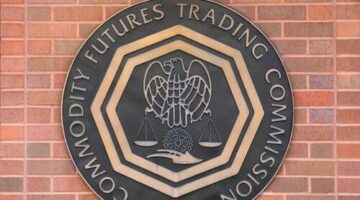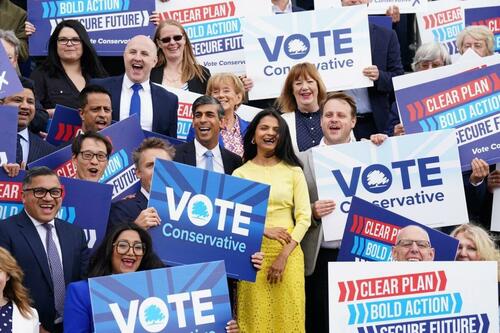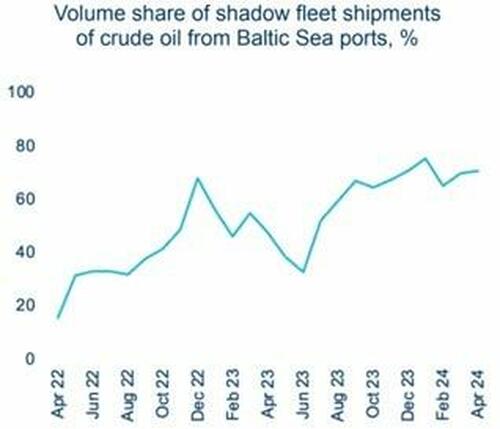
Markets Need a Lot More than a Rate Cut
The recent market weakness suggests a combination of profit-taking and concerns about the latest United States jobs and manufacturing figures, added to the abrupt unwinding of part of the yen carry trade. Valuations had soared and market participants now demand central bank easing. However, rate cuts may not be enough to send markets to new all-time highs. Money supply growth and quantitative easing are needed to maintain these valuations.
Investors are turning to utilities and real estate stocks, but these sectors need more than low rates; they need a buoyant economy and strong consumer demand, so interest rate decisions may be insufficient.
If we look at the long-term trend, the market remains in a cyclical bullish mode, but we need to understand why and be aware of the rise in volatility.
Markets have been rising, discounting an ever-increasing money supply and future currency debasement. However, the next wave of central bank easing may not come until 2025.
Fundamentals may have been weak and earnings not as robust as required by demanding valuations, but investors understand that the fiscal challenges posed by rising government expenditure and public debt will ultimately mean ultra-loose monetary policies, which make sovereign bonds more expensive, erode currency purchasing power and, by comparison, make equities and risky assets more attractive.
Investors may continue to accept higher valuations for equities and risky assets because they fear monetary and fiscal insanity more than they are concerned about a recession.
It is not that markets like fiscal imprudence. Extreme monetary policies erode the currency’s purchasing power, and equities and risky assets become protection for real inflation. Murray Rothbard calculated the true money supply (TMS), which is the most realistic indicator of inflation. As Professor Joseph Salerno explains, “three items which are not included in any Fed measure of the money supply (Ml, M2, M3) or even of overall “liquidity” (L) find a place in the TMS.” These are the demand and other deposits held by the U.S. government, foreign official institutions, and foreign commercial banks at “U.S. commercial and Fed banks.”.
When we look at True Money Supply, we can understand what market participants really look at for a bullish market trend, even if they may not be calculating it in the Rothbard way. The available money for market transactions. The quantity of money that is put to work to generate a return that offsets inflation. “Liquidity,” as most market participants call it.
Mike Shedlock, a great macroeconomic analyst and investor, discusses these important differences when analyzing money growth because they basically give us an idea of the buying or selling pressure in a market. The True Money Supply (TMS) includes the currency component of M1, total checkable and savings deposits, as well as U.S. government deposits, note balances, and demand deposits from foreign banks and public institutions. Any market trader understands this when they are talking of “cash on the sides,” “high liquidity,” and “bullish sentiment.”. All these money measures, when rising, indicate stronger demand for risky assets looking for a return. Alternatively, Professor Frank Shostak’s definition of total money supply includes cash plus demand deposits with commercial banks and institutions plus government deposits with banks and the central bank.
Why are these measures more important than the traditional M2 and M3 money aggregates? Because they show us the level of buying pressure in the market.
Many Keynesian economists see deposits and savings accounts as idle money and invented the ludicrous “excessive savings” concept. There is no such thing as excessive savings or idle money. The reason they see those savings as negative is because their political view of economics perceives that any money not spent by the government is not productive. Far from it. Those savings and deposits are invested in the capital markets and are the key to originating lending, investment, and growth in the real economy. Keynesians tend to think of the “social use of money,” which means more printing of currency through deficit spending, because they mostly perceive that the government is the only one making a real social use of currency issued. However, inflationism is not a social policy but a tool for serfdom that creates hostage clients of citizens by destroying the purchasing power of their wages and deposit savings. It is a transfer of wealth from the middle class to the government.
Once we understand that what matters for market participants is the elusive “liquidity” and “sentiment” perception and that bullish sentiment and liquidity come from a rising true money supply, while bearish signals arise from a decline in this measure of liquidity, then we can understand that the allegedly hawkish messages of central banks disguise a much looser policy than headlines suggest. Furthermore, using any of the different measures of true money supply previously mentioned, we can understand why market participants try to defend their clients from the current and future loss of purchasing power of the currency by taking more risk and accepting higher valuations for growth assets.
Most market participants are aware that higher liquidity injections will mask the current fiscal imbalances. Unsustainable deficit spending is money printing, which creates strong long-term pressure on the purchasing power of fiat currencies. Thus, market corrections are always an opportunity to buy stocks and risky assets that will always rise in value in fiat currency terms because the unit of measure, money, loses purchasing power.
Once it is established that fiscal insanity will make currencies fall in value and, consequently, markets denominated in that currency rise, investors need to understand the timing and where to invest.
The difficulty this time is that now we have persistent inflation and central bank losses in their bond portfolio. Thus, timing is essential. The lag effect of a market correction and its subsequent bounce may be longer. It will happen, but we need to guess when.
After the Fed decided to hold rates steady at its two-day meeting, equities slumped, even though Powell seemed to signal that rate cuts could be coming as soon as September. Markets discounted a slump in liquidity, therefore lowering buying pressure. Hence, multiple compressions. Rate cuts do not signal a healthy economy but a slowing one, so equities slump despite the promise of a rate cut because investors continue to see lower buying pressure.
Even with the bounce after Black Monday, most indices remain significantly below the level when markets started to weaken on July 22. The lag effect of the true money supply started to show its effect on March 13. The Nasdaq and the S&P 500 were leading markets that had begun to slow down and pointed to lower highs and deeper lows.
What can we learn ahead of the next bullish wave of money growth? First, pay attention to the components mentioned above and their trends. Second, analyze when the Fed may start a true easing path, being realistic. The trend now signals liquidity drying up. There may not be a recession, but monetary buying pressure is slowing down markedly. The tap is not closed, but the flow is slow.
The Fed may cut rates in September, but that is only realizing that the economy is weaker than headlines suggest. A rate cut of 25 or 50 basis points is unlikely to generate an immediate burst in credit demand or rising deposits. Hence, the truly bullish signal would come when the Fed returns to purchasing mortgage-backed securities and treasuries. However, that may not happen until elections have passed and there is clarity about the next chairman of the Fed. We may be talking about March 2025.
The next wave of monetary excess will be more aggressive than the past one, that is guaranteed.
Originally Posted at https://mises.org/
Stay Updated with news.freeptomaineradio.com’s Daily Newsletter
Stay informed! Subscribe to our daily newsletter to receive updates on our latest blog posts directly in your inbox. Don’t let important information get buried by big tech.
Current subscribers:








